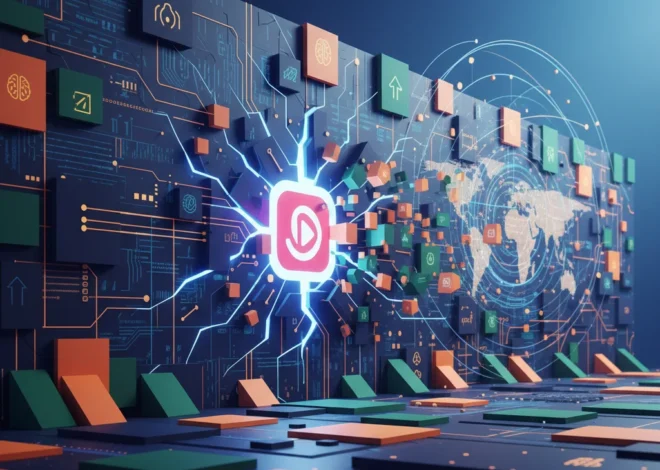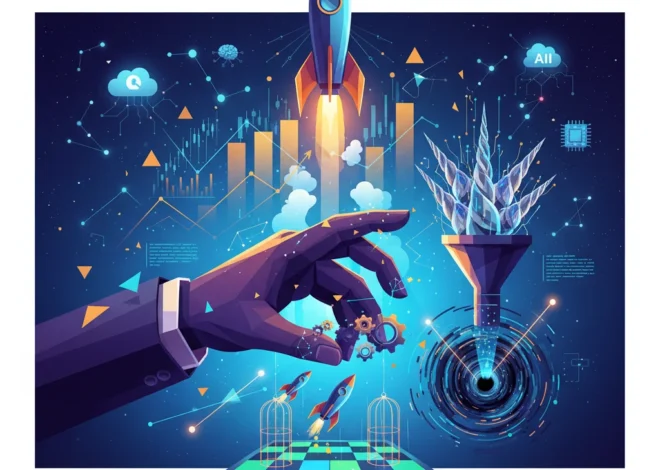
The AI Gold Rush: Why ‘Bragawatts’ Are Fool’s Gold for Tech Investors
The air is thick with the hum of servers and the electric thrill of a new technological revolution. Everywhere you look, the conversation around artificial intelligence is dominated by staggering numbers: billions in funding, data centers the size of small cities, and an insatiable appetite for GPUs. The tech world is in an arms race, and the unit of measurement seems to be the “bragawatt”—a clever term for the sheer electrical power being thrown at building the future of AI.
But what if I told you this obsession with raw power is a distraction? What if the real, enduring value in the AI infrastructure boom isn’t in the megawatts, but somewhere else entirely?
A recent analysis from the Financial Times highlights a critical blind spot in the current investment frenzy. While everyone is focused on the picks and shovels of the AI gold rush—the chips, the data centers, the cooling systems—the article argues that the true winners will be those who control the inputs that *can’t* be easily commoditized. It’s time to look beyond the bragawatts and understand where the sustainable moats are being built.
The ‘Bragawatt’ Illusion: A Lesson in Commoditization
Let’s first define our terms. “Bragawatts” refers to the massive energy consumption of AI data centers, a proxy for the immense computational power being deployed. It’s an impressive metric, to be sure. Companies are proudly announcing gigawatt-scale data centers, and investors are pouring money into anything that smells like physical infrastructure. The problem? This is a race to the bottom.
History is littered with examples of foundational technologies that quickly became commodities. In the dot-com bubble of the late 90s, investors were mesmerized by bandwidth. Companies spent billions laying fiber-optic cable, believing that whoever owned the pipes would own the internet. Many of those companies went spectacularly bankrupt. The real winners weren’t the pipe-layers, but the companies like Google and Amazon that built indispensable services *on top* of that infrastructure.
We saw a similar pattern with the rise of the cloud. While Amazon, Microsoft, and Google built colossal infrastructure, the raw compute and storage they offered became a utility. The explosive growth that followed came from the SaaS companies and innovative startups that leveraged that cheap, accessible power to create new software and experiences.
Raw computing power, like bandwidth and storage before it, is on a relentless path toward commoditization. While Nvidia currently holds a dominant position, competition is heating up, and the cost-per-computation will inevitably fall. Betting your entire strategy on owning the most powerful hardware is like trying to sell the most generic brand of water in a world full of free-flowing springs. Eventually, it becomes a low-margin, high-volume game that only a few giants can win.
The Real Moats: Where Enduring AI Value Is Being Created
If the hardware is a commodity, where should savvy entrepreneurs, developers, and investors be looking? The value is shifting up the stack to the layers that are harder to replicate, control access, and create sticky ecosystems. These are the inputs that are unlikely to be commoditized.
To illustrate this shift, let’s compare the commoditizing elements of the AI stack with the areas where durable value and economic moats are being built.
| The ‘Bragawatt’ Trap (Commoditizing) | The Enduring Moat (Durable Value) |
|---|---|
| Raw Compute Power (GPUs/TPUs) The hardware itself. While a temporary bottleneck, it’s ultimately a numbers game with declining costs over time. |
Proprietary Software & Orchestration The complex software that manages the hardware, optimizes workloads, and provides developer tools. Think of Kubernetes for AI. |
| Data Center Real Estate The physical buildings and cooling systems. Capital-intensive and important, but not a unique technological advantage. |
Unique, High-Quality Data Sets Proprietary, cleaned, and labeled data that is difficult or impossible for competitors to acquire. This is the unique fuel for specialized models. |
| Generic Foundation Models Open-source or widely available models that provide a baseline of capability but little differentiation. |
Specialized AI Models & Workflows Fine-tuned models and end-to-end automation solutions that solve specific, high-value business problems. |
| Basic Cloud Storage The “dumb” storage of raw data, which is a low-margin utility. |
Interconnectivity & Data Management Platforms Systems that allow for the seamless flow and transformation of data between different services and models, creating vendor lock-in. |
The companies that win won’t just have access to GPUs; they’ll have the best programming frameworks for developers to use them. They won’t just store petabytes of data; they’ll have the platforms that make that data useful. This is where true innovation lies.
The AI in Your Kitchen: How Software and Automation Are Redefining Home Life
The New Gatekeepers of the AI Kingdom
So, who are the new gatekeepers? They fall into a few key categories:
1. The Orchestrators and Tool-Builders
Running large-scale machine learning models is incredibly complex. It requires sophisticated software to manage distributed computing, schedule tasks, and optimize for cost and performance. Companies that build the dominant platforms for MLOps (Machine Learning Operations) or create indispensable developer tools will become the new “operating systems” for AI. They create value by reducing complexity and increasing efficiency, building a loyal developer following in the process.
2. The Data Curators and Connectors
As one expert quoted in the FT article notes, “the plumbing that enables different systems to work together” is a critical, non-commoditized asset (source). In the world of AI, this “plumbing” refers to the platforms that gather, clean, process, and connect data from disparate sources. Companies like Snowflake and Databricks built empires in the cloud era not by selling storage, but by providing a platform to make sense of the data stored there. The AI-native equivalents will be even more valuable.
3. The Cybersecurity Vanguards
The more complex and powerful AI systems become, the larger the attack surface grows. Securing AI models from data poisoning, adversarial attacks, and other novel threats is a monumental challenge. Companies that develop leading cybersecurity solutions specifically for the AI stack will be essential. This isn’t just a feature; it’s a fundamental requirement for deploying AI in any mission-critical application. According to the article, specialized engineering talent required to build and secure these systems is another key input that is hard to commoditize (source).
JPMorgan’s New AI Co-worker Is Writing Your Performance Review
What This Means for You: A Practical Guide
This isn’t just an abstract theory for investors; it has real-world implications for everyone in the tech ecosystem.
- For Entrepreneurs & Startups: Stop thinking about how to compete on raw power. Focus on a niche. Build a best-in-class software tool that solves a painful part of the AI development lifecycle. Create a unique data asset for a specific industry. Your advantage is speed and focus, not capital. The goal is to become an indispensable part of the AI stack, not the entire stack itself.
- For Developers & Tech Professionals: Your skills are the ultimate non-commoditized asset. Don’t just learn how to use a specific model; learn how to build the systems that train, deploy, and secure them. Specialize in MLOps, AI security, or data engineering. The demand for talent that can bridge the gap between raw infrastructure and real-world applications is exploding. As the FT notes, the “pick-and-shovel makers” who last longest are those with hard-to-replicate expertise (source).
- For Investors: Look past the headlines about new data centers. When evaluating an AI company, ask the tough questions. What is their software moat? Do they have a proprietary data advantage? Are they creating a sticky ecosystem or just renting commodity compute? The companies with the best answers will be the long-term winners.
After the Breach: Why the M&S and TCS Split is a Landmark Moment for Corporate Tech
Conclusion: The Future is Built on Software, Not Just Silicon
The AI infrastructure boom is undeniably one of the most significant technological shifts of our time. The investment and raw power being poured into it are necessary to build the foundation for the future. But the foundation is not the skyscraper.
The enduring value, the generational companies, and the truly transformative innovations will be built on top of this commoditizing hardware layer. They will be built with clever software, unique data, and specialized human talent. The next time you hear about a new “bragawatt” data center, be impressed by the scale, but don’t be distracted. The real question to ask is: who is building the indispensable software that will make it sing?


